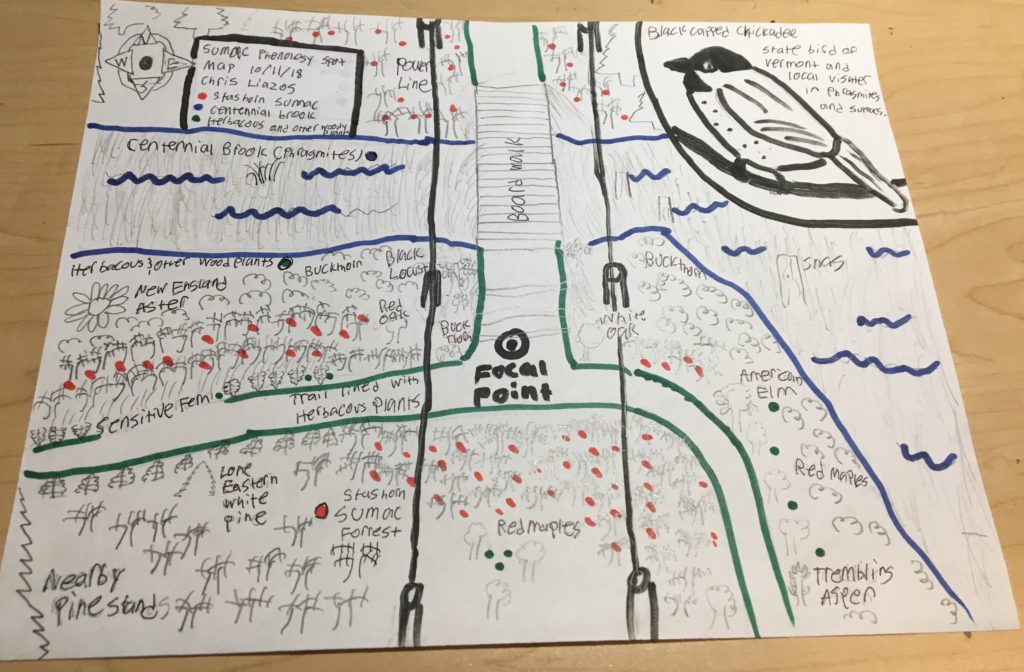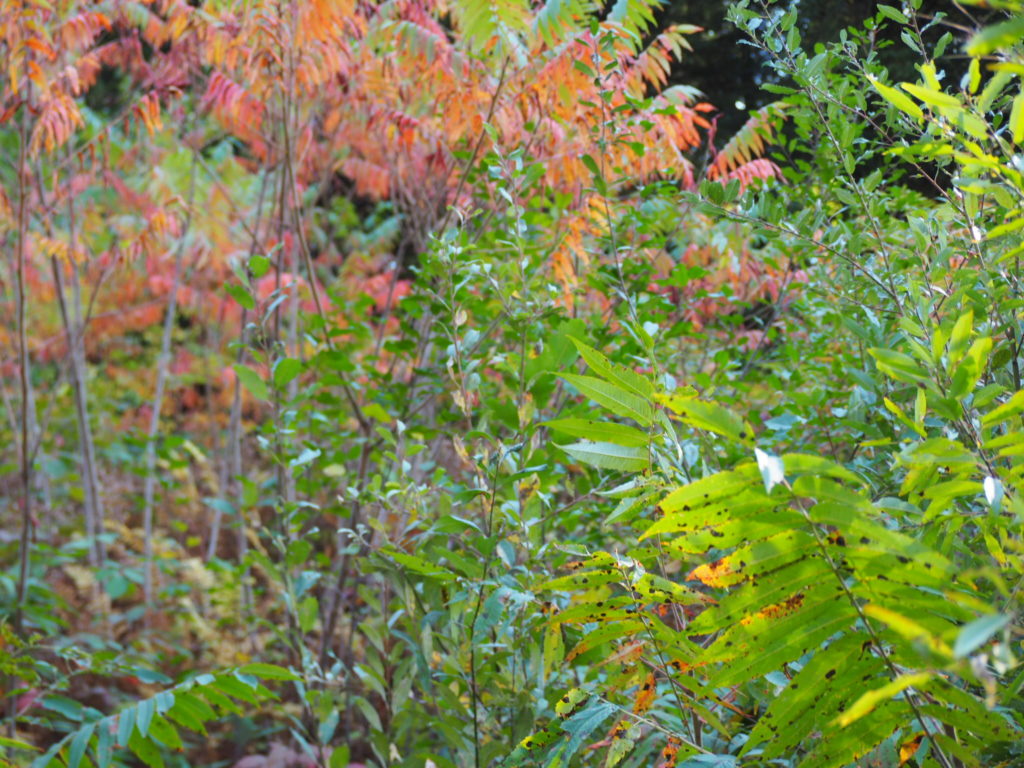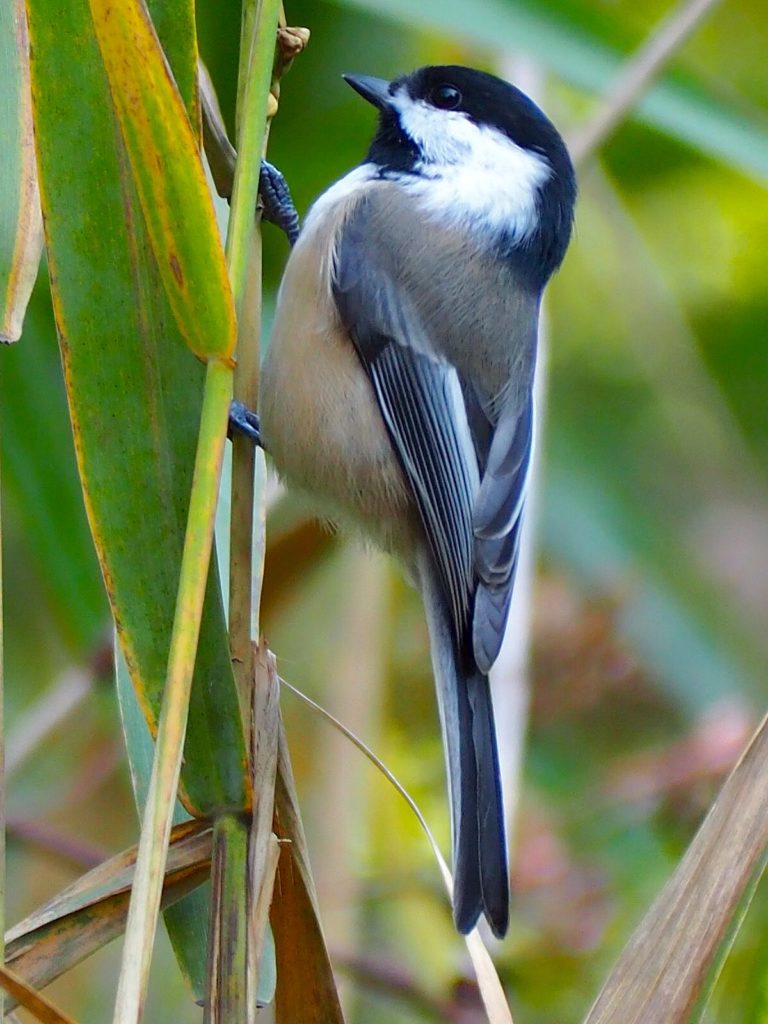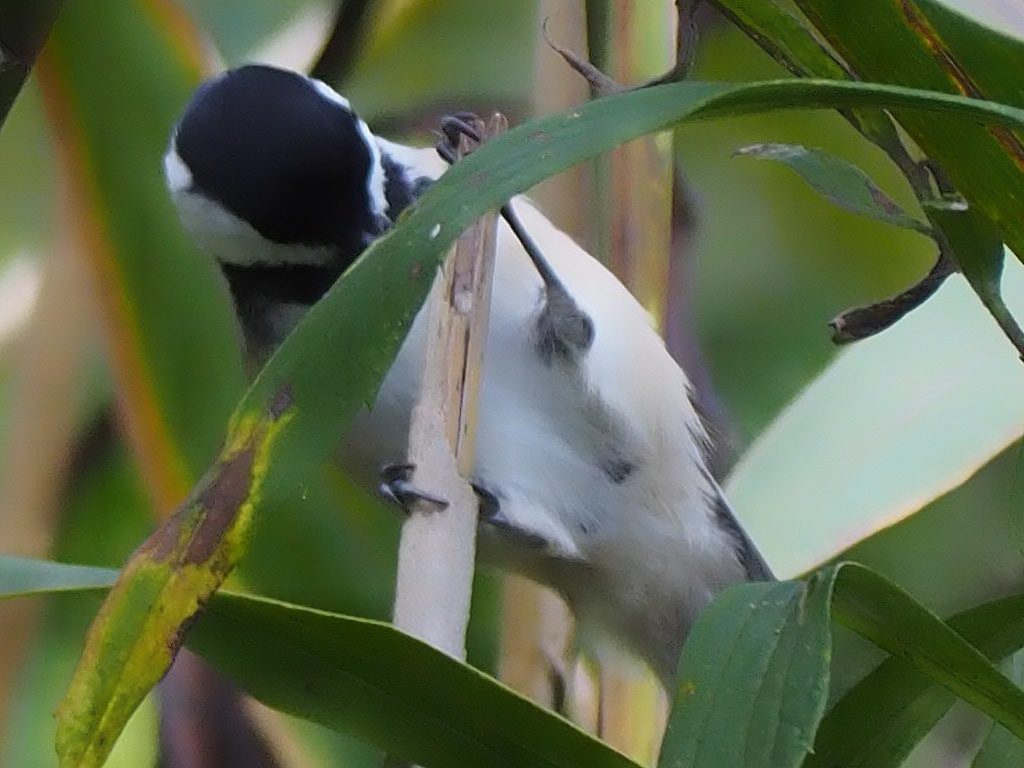
Looking at my phenology spot it is a complex mix of staghorn sumacs, the phragmites of Centennial Brook, the different variety of different herbaceous and woody plants, and all being surrounded by pine stands. One notable difference I have seen in my location is the changing of the seasons. As it approaches further into fall the leaves of sumac and other deciduous trees are loosing their chlorophyll in their leaves exposing their other pigments. Normally we think of plants only having green pigment, yet fall reminds us of the many other pigments these trees have such as red, yellow, and orange. The sumacs still have the majority of their leaves unlike the the other deciduous trees in my location which have lost most of their leaves already most likely due to their young age.

One notable wildlife experience was seeing black-capped chickadees in the phragmites. With one little pishing call one by one they emerged from reeds to say hello. As active hunters I have seen them foraging in the sumacs, maples, and now the phragmites. Balancing themselves on the reeds they held still enough to be photographed. Up in the canopy I always ignored them, yet now I have a new appreciation of Vermont and my home state’s state bird. Coming up to them with their variety of calls only puts a smile on my face now and I can’t wait to see more of them in the winter and learn more about their natural history.

Black-Capped Chickadee 1 © Chris Liazos

Black-Capped Chickadee 2 © Chris Liazos

Black-Capped Chickadee 3 © Chris Liazos

Black-Capped Chickadee 4 © Chris Liazos

Black-Capped Chickadee 5 © Chris Liazos